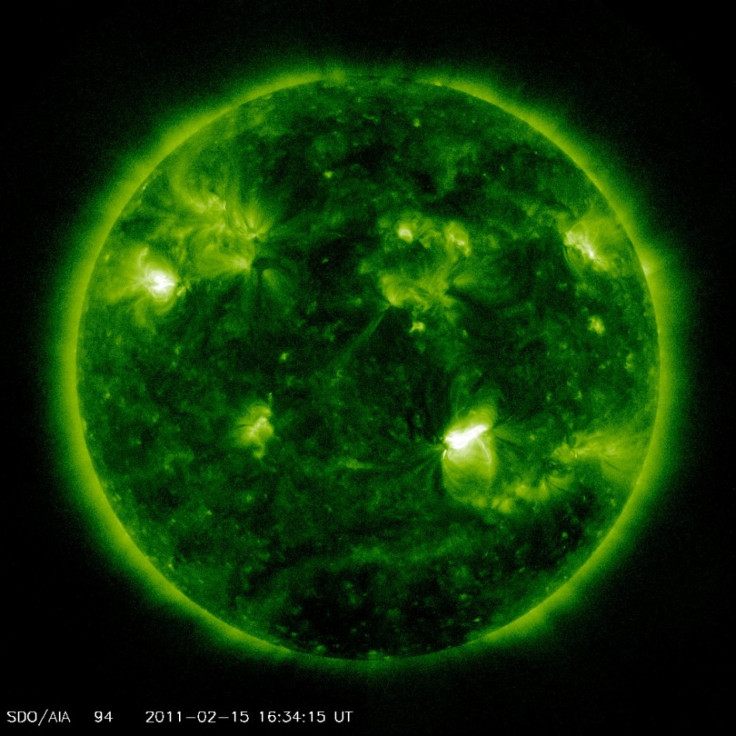Satellite Sees Most Powerful Solar Flare This Year

The strongest solar flare yet seen in the current solar cycle was picked up this week by NASA's Solar Dynamics Observatory, which could mean spectacular auroras over the next few days.
The flare first erupted on Feb. 13, from a sunspot numbered 1158, and grew again on Monday night at about 9 p.m. Eastern time. It is pointed directly at the Earth, and will send X-rays and charged particles towards the planet.
Solar flares happen because the Sun's magnetic field is a complicated shape. Earth's field is like a giant bar magnet, with a north and south pole and neat lines describing a donut-like shape.
The sun, however, is made of hot gases that are highly energetic, called plasmas. The gas forms convection cells, which are regions where hotter gas is rising and cooler gas falls towards the Sun's center. As that happens the plasmas, which are made up of charged particles, create their own magnetic fields. Instead of a giant neat toroid, the Sun's magnetic fields are knotty and take on tangled shapes.
The plasma follows the field lines, forming the loops visible in images of the Sun's surface. Sometimes those lines can cross. A lot of energy can be stored in the magnetic fields, and when one touches another it can release that energy, forming a flare.
Flares send a burst of X-rays and charged particles -- mostly protons -- out from the Sun's surface into space. Occasionally one is pointed in the right direction so that it affects the Earth. They are classified according to how powerful they are, as A, B, C, M or X, with X being the most powerful. The flare SDO detected was an M-class flare on Feb. 13, but last night it was classified as an X-class flare.
The last big solar flare occurred in 2006, and more powerful ones have occurred in 2005 and 2003 as well. The most powerful ever recorded was in 1859 and was sufficiently strong to damage electrical equipment.
While solar flares can damage satellites and endanger astronauts, in this case it is not powerful enough to do either. It will, however, create more spectacular auroras over the next few days. The earlier flare created similar sights for observers in the far Northern and Southern hemispheres.
To contact the reporter responsible for this story call (646) 461 6917 or email j.emspak@ibtimes.com.
© Copyright IBTimes 2025. All rights reserved.





















